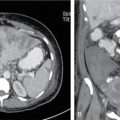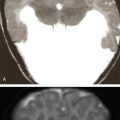Hemant Patel, Gaurang Raval, Pushparaj Bhatele Man is by nature a social animal; an individual who is unsocial naturally and not accidently is either beneath our notice or more than human. Society is something that precedes the individual. Aristotle Professional societies or associations are nonprofit organizations. These associations act like a professional family of a practitioner. They increase social ties among individuals of the same profession across different geographical regions. The basic role of any society is to maintain a watchful guard over legitimate practices within a profession, to safeguard public interests, to represent individual member’s concerns to legal and government authorities and to facilitate academic research activities within the profession. Professional membership societies seek to advance the interests of a profession and its members in contrast to credentialing organizations, which verify the qualifications of its registrants. They help in promoting radiology on a wide platform. They help in setting up standards of practice in radiology. They also collaborate with other professional bodies and the public and patients. The discovery of X-rays by Sir Wilhelm Roentgen and their role in body imaging started a field in modern medical science called radiology. A scientific meeting was conveyed on 2 April 1897 wherein the formation of first radiological society “The X-ray Society” took place. Shortly thereafter, on 3 June 1987, the initial meeting of a new society took place. They called it “The Roentgen Society” in honour of Wilhelm Conrad Roentgen. A very formal Grand Inaugural Meeting got conveyed at St Martin’s Town Hall during November in the same year. It is notable that such meetings took place in less than 2 years after discovery of the X-rays. While the new society formation came from doctors, it was indeed surprising that the first president was a physicist, Silvanus P Thompson. In 1896, the first radiological journal was published in London The Archives of Clinical Skiagraphy. In 1987, the name transformed to The Archives of the Rontgen Ray. In the year 1900, John Rudis-Jicinsky wrote a letter to Heber Roberts proposing the establishment of a radiological society for America. On 26 March 1900, Roentgen Society of United States was founded with Heber Roberts as president and John Rudis-Jicinsky as secretary. The name eventually became American Roentgen Ray Society (ARRS). ARRS is in vogue even after 100 years as it holds annual educational meeting and publishes the famous monthly American Journal of Roentgenology. Education, practice guidelines, research and social activities are the main objectives of any radiological society. They are the pillars on which the society stands. Societies offer a range of training opportunities. It should be in accordance with its vision to promote diagnostic and interventional radiology. It should be done at pre- and postgraduate education levels in way of formulating examination and teaching programmes. Active support is given for trainees and consultant radiologists commencing research or developing their research interests to increase opportunities for research within the training programme and developing appropriate mechanisms for promoting research outputs via journal publication. Trainees usually receive free access to all educational resources such as interactive learning activities, study guides and in-person training opportunities. Some of the academic goals of society are to expand teaching resources to a wider audience. It can be done by the following: To establish practice essentials: Society provide opportunities to kick-start the career of young radiologists and enhance the career of experienced radiologists. Societies continually seek ways to advance the radiologic sciences, build strategies to improve healthcare delivery and foster the development of the next generation of radiologists. Some of the activities to promote research include joint fellowship and joint funding of research. This is usually done with other research funding bodies. The organizing of conferences is done to cater research guidance and to train radiologists in research methodology. Such opportunities provide great platform for networking among research-centric radiologists. Database creating for active ongoing research is a great step in such mission. Publication of journals that feature the most current, clinically relevant and the highest quality research in the field of radiology is one of the important goals. Through the annual conference, showcase the newest, most cutting-edge technology to learn about new techniques and new technology. They form opportunities to connect with the national as well as global radiology community and get a front-row seat to the latest research, education and technological advancements. They serve as platforms for exchange of knowledge. They include offering radiological services in resource-poor settings and other nonradiological services to give back to the community. Societies promote healthy practices for the radiologists to minimize the radiological and nonradiological health hazards. Societies build fellowship and increase networking among the radiologist members. International relations with other radiology societies help in building international relations. Few societies with mutual agreements have a student exchange programme, which helps in enriching culture and knowledge in both participating societies.
1.34: Radiological societies
History
Objectives
Education
Research
Annual meetings
Social activities
International radiological societies
Stay updated, free articles. Join our Telegram channel

Full access? Get Clinical Tree








